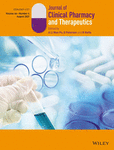Outcomes of a pharmacist-driven vancomycin monitoring initiative in a community hospital
Abstract
What is known and objective
Vancomycin, an antibiotic commonly used to treat MRSA infections, can be nephrotoxic. Administering vancomycin requires close monitoring of serum vancomycin levels and appropriate dosing based on patients’ renal function, underlying infection type and serum concentration levels. This article discusses the results and implications of a pharmacist-driven vancomycin monitoring initiative, which was implemented at Mercy Catholic Medical Center's Philadelphia Campus (MPC) in July 2016.
Methods
MPC pharmacists were trained on how to give appropriate vancomycin dosing recommendations based on patients’ vancomycin trough levels, renal function and underlying infection. This retrospective observational study consisted of patients who presented to MPC and were administered vancomycin over a 3-month period in 2015 for pre-implementation cohort and over a 3-month period in 2018 for post-implementation cohort. Patients with age ≥18 and receiving vancomycin for a minimum of 48 hours were included, whereas ESRD patients were excluded. Primary goal evaluated whether the incidence of AKI decreased with the pharmacist-driven initiative. Secondary goal assessed whether vancomycin level monitoring and achievement of goal serum levels improved with the initiative.
Results and discussion
A total of 214 patients were included in the final data analysis, with 110 patients in the pre-implementation cohort and 104 patients in the post-implementation cohort. Although not statistically significant, a higher incidence of AKI was observed in the post-implementation cohort. However, compared to pre-implementation cohort, post-implementation group had higher percentage of patients with underlying comorbidities (such as CKD), higher number of cases of severe sepsis and septic shock, and greater number of patients with concomitant exposure to CT contrast and piperacillin-tazobactam—all of which were confounding factors that likely increased the AKI incidence in post-implementation cohort. With the initiative, there was a significant increase in the number of patients with appropriate vancomycin trough level monitoring (27.3% vs 55.8%, p value < 0.001) in the post-implementation cohort and a decrease in the number of patients with no trough level monitoring (30% vs. 7.6%, p value < 0.001).
What is new and conclusion
Pharmacist-driven vancomycin monitoring significantly improved the monitoring compliance of vancomycin trough levels. In patients who developed AKI during their hospital course, pharmacist interventions improved the total percentage of patients attaining desired trough goals and helped reduce further renal insult from supratherapeutic vancomycin level. Incorporation of AUC-guided dosing and monitoring has the potential to further optimize vancomycin efficacy and safety.
CONFLICT OF INTEREST
No conflicts of interest have been declared.




